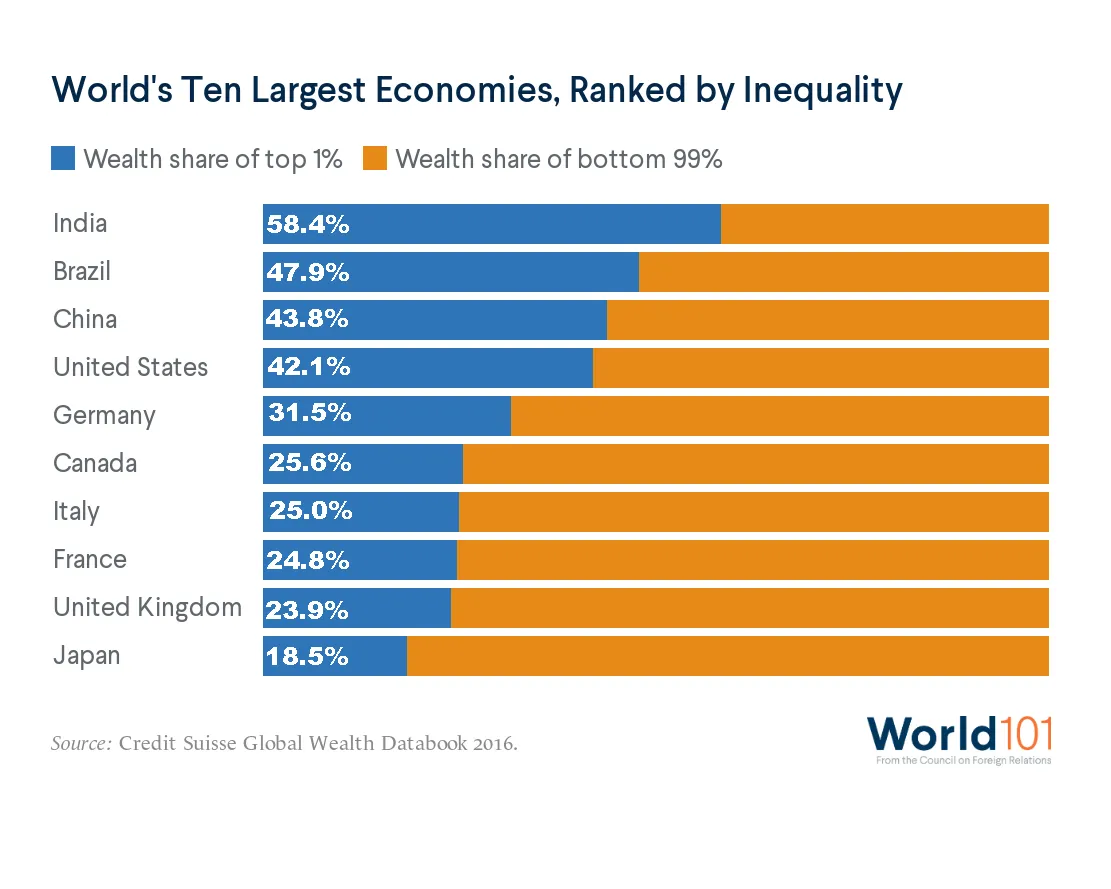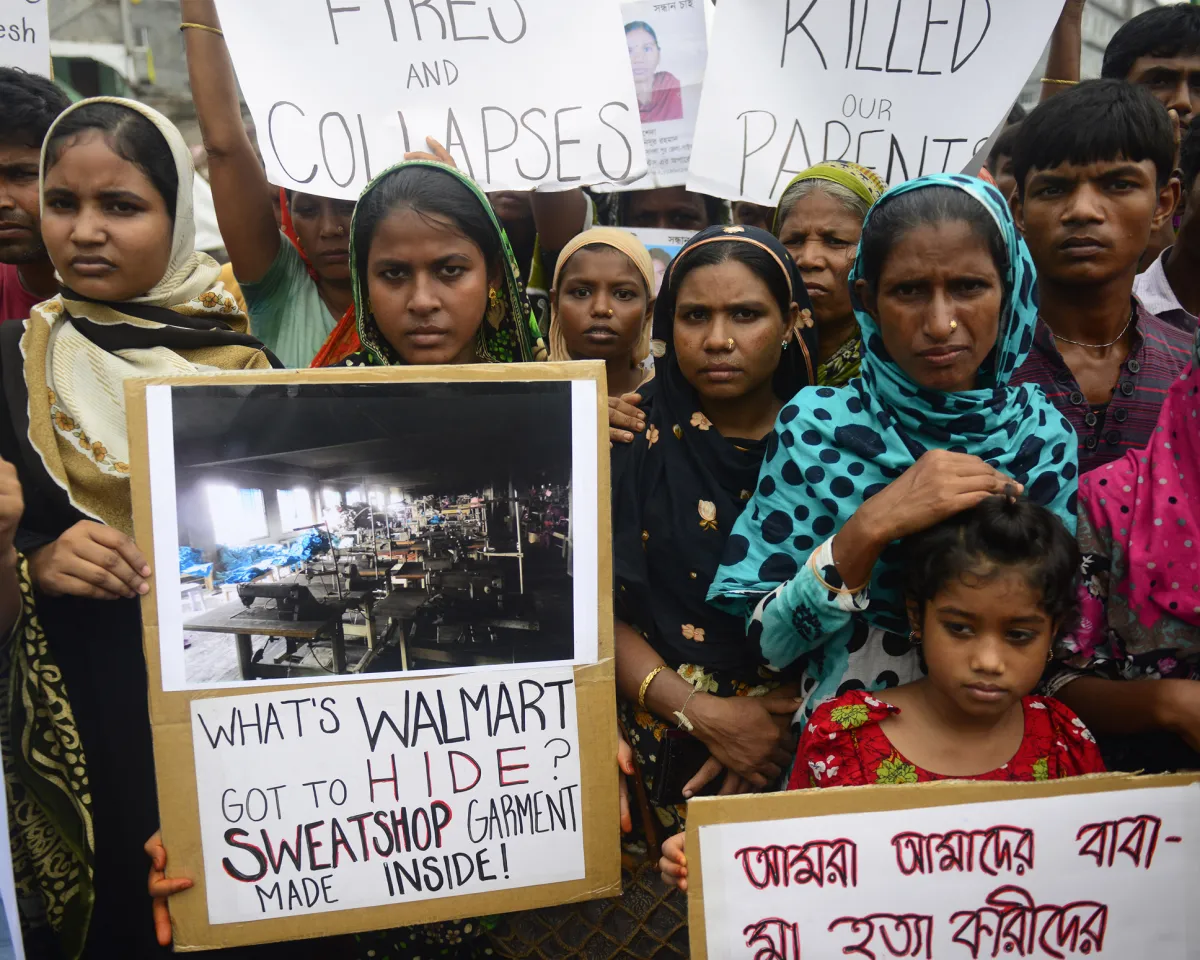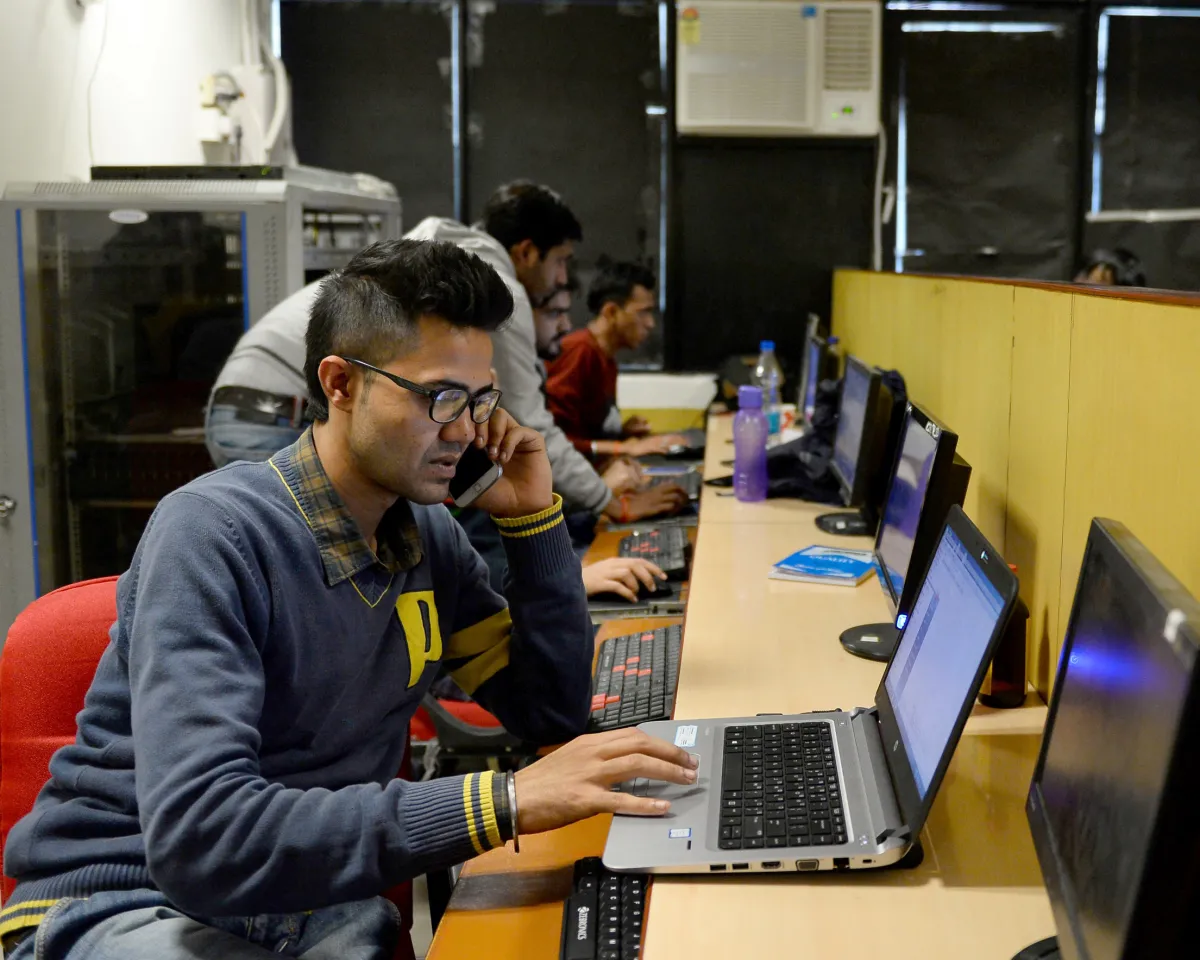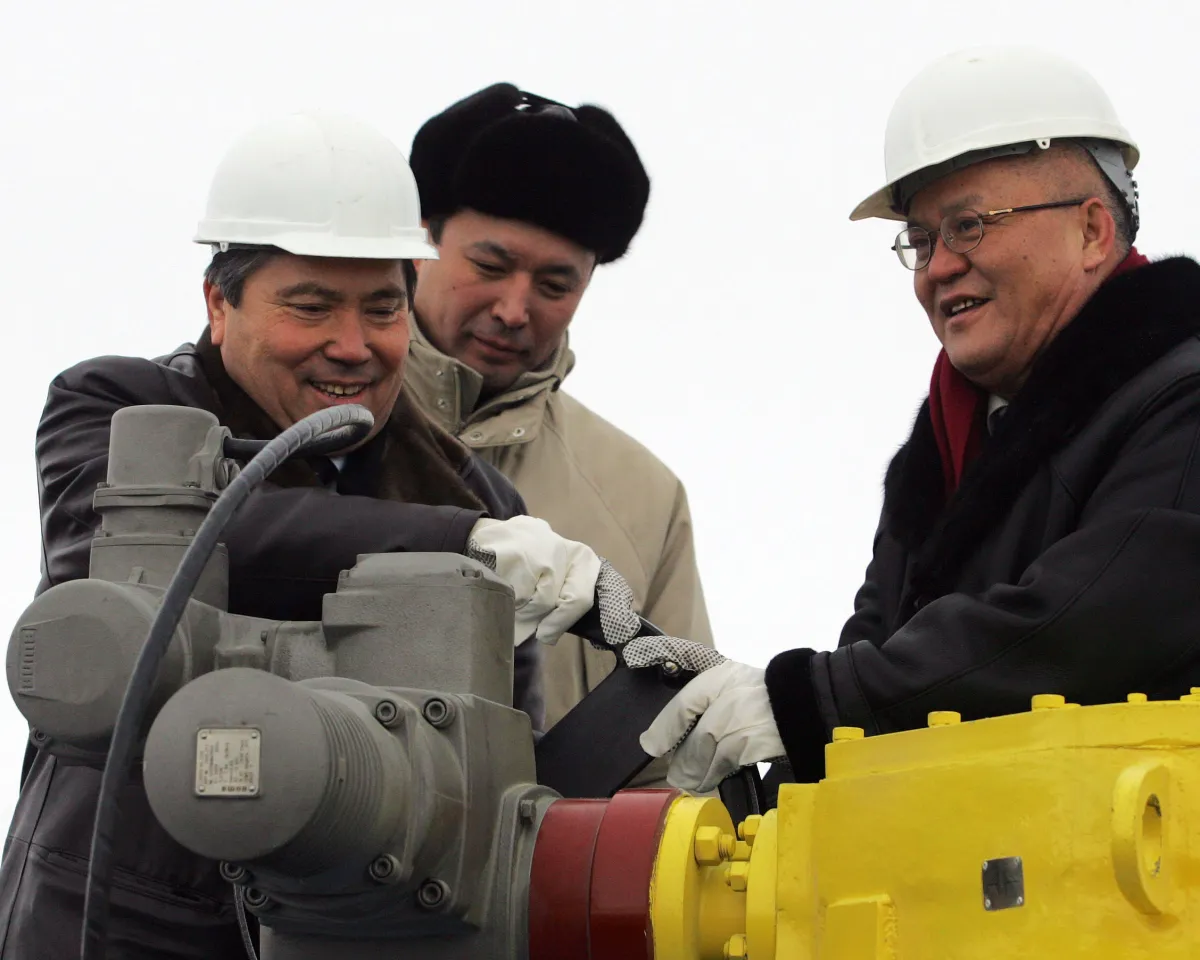Economics: South & Central Asia
Recent growth has spurred new development, but also revealed old and new economic challenges.
Much of South Asia has seen impressive economic growth in recent years. Its economy grew at an average of 6.7 percent every year between 2010 and 2018, twice as fast as the global average of 3 percent. Most of this growth has been driven by India, where urbanization and a booming tech sector has made the country the fastest-growing large economy in the world. Bangladesh has developed domestic industries like textile manufacturing to achieve similarly strong growth. But even with this economic progress, poverty and inequality persist across South and Central Asia, with inadequate infrastructure region-wide and young men migrating due to high unemployment. Part of the problem is the lack of trade among countries in South Asia, mostly due to Pakistan’s hesitation to allow overland trade across its territory, stemming from its deep mistrust of India. To address the infrastructure gap, China’s Belt and Road Initiative (BRI) has swept across much of the region. Though countries like Pakistan and Kazakhstan have taken on Chinese investments in infrastructure projects to transform their economies, paying back BRI loans has proven to be a challenge.
India’s Rise Drives Growth in the Region
As a region with many developing countries, South Asia’s economies are generally trending upward, with diverse economies and exports, like cotton in Pakistan and textiles in Bangladesh. Representing over half of the region’s GDP, the largest and most important economy in the region is India. India’s economy, already about the size of the United Kingdom’s, is on the rise. It now ranks fifth in the world, and according to projections from HSBC Bank, India’s economy will be the world’s third largest by 2030. Since the 1990s, when India joined the World Trade Organization and implemented economic reforms that reversed decades of trade restrictions, its per capita income has tripled and life expectancy and literacy have gone up. The country still faces challenges—namely, the need to create millions of jobs every month to prevent unemployment from rising.
Poverty and Inequality Hold India Back
India’s rise in the global economy, development of high-tech hubs, and creation of a class of sophisticated entrepreneurs tell only one side of the story. Throughout the country, poverty and inequality persist, infrastructure is lacking, and the country trails world averages in health, nutrition, and educational outcomes. India has the world’s third-highest number of billionaires and hundreds of millions of people in the middle class, but it is also home to one of the world's largest populations of people living in poverty. Although significant improvements have been made in recent years, millions of people in India still lack access to toilets, running water, and roads—a development challenge that hinders the country’s long-term growth. These internal disparities have created two Indias. Such stark inequality can limit the amount of money consumers spend, as well as overall social mobility, so that the most talented people do not always rise to the top. Concentrated wealth could also cause political instability, which could also harm the economy in the long run.
Reliance on Remittances Is a Double-Edged Sword
South and Central Asia’s diaspora plays an important role in supporting the region’s economic growth through remittances—the money migrants send home from working jobs abroad. In 2021, approximately 30 percent of Kyrgyzstan’s economy came from remittances, proportionally the third-highest in the world. Tajikistan comes in second (almost 33 percent), and Nepal is at number eleven (22 percent). In terms of dollar value, India is the top remittance recipient globally. In 2021, at $90 billion, India received almost twice the amount of remittances received by any other country in the world. Many experts say remittances help reduce poverty, as the money flows directly to those in need and goes toward basic requirements such as food, shelter, education, and health care. But overreliance on remittances is dangerous for an economy. For example, Russia’s economic downturn in 2015 disproportionately hurt Central Asian countries such as Tajikistan; at the time, one in five Tajikistanis worked abroad, mostly in Russia.
Textile Industry Exacts Human Cost in Bangladesh
The textile and garment industry accounts for 80 percent of Bangladesh’s exports and employs over 4 million people—mostly women. But in 2013, the industry’s darker side was revealed when more than 1,100 people died after Rana Plaza, a building that housed garment factories, collapsed. After the collapse, thirty-eight people, including the complex’s owner and other managers, were charged with murder. The astounding death toll, the deadliest in the history of the garment industry, revealed the unsafe work conditions that make possible the cheap clothing sold by retailers such as Benetton, Mango, Walmart, and Zara in the United States and elsewhere. As a result, over twenty apparel companies signed an agreement in Bangladesh with the goal of improving worker safety. However, other challenges, such as low wages, long hours, and overall poor working conditions remain unaddressed, as Bangladesh figures out how to balance its top economic commodity with the welfare of industry workers.
Global IT Dominance Drives Indian Growth
High-quality IT services like data processing, information security, and communications have made India the top labor source and largest operations center for international information technology (IT) companies. The IT industry is a major driver of India’s growth, expanding by billions of dollars each year and accounting for over 12 percent of the country’s GDP in 2023. This IT dominance began in the 1980s and 1990s, when the Indian government began to allow foreign direct investment and reduced tariffs on software and hardware. Furthermore, India has the second-largest number of English speakers in the world and lower labor costs than European countries, making it an attractive source of engineers and other professionals for international firms. Cities around India have boomed as a result. Major tech companies like LinkedIn have their Asia hubs in Bangalore, the Silicon Valley of India, and Hyderabad’s “Cyberabad” district is one of the largest IT hubs in the world.
Isolated Economies Leave Untapped Trade Potential
Trade between South Asian countries makes up less than 5 percent of the region’s total trade. In other words, South Asian countries overwhelmingly trade with countries outside their region rather than with their neighbors. In fact, as other regions like Europe and Southeast Asia only grow more integrated, South Asian integration has stagnated. This is mostly due to Pakistan’s deep-seated mistrust of India, which has resulted in high tariffs on Indian goods entering Pakistan as well as inefficient border crossings. For example, New Delhi, India is only 250 miles from Lahore, Pakistan, but the vast majority of trade between the two cities travels through Dubai—more than 2,500 miles away. With lower tariffs and fewer restrictions at border crossings, India-Pakistan trade has the potential to grow from $3 billion to over $30 billion, but such reforms would first require greater cooperation between the two countries, an unlikely development.
Central Asia Pivots From Russia to China
Central Asian countries are growing and urbanizing after two decades of stagnation following the fall of the Soviet Union. Many are looking to export their vast energy reserves to boost their economies. But these countries desperately need investments in infrastructure, such as oil and gas pipelines, to unlock their export potential. That’s where China comes in. China has invested billions in oil pipelines in Kazakhstan as part of the Belt and Road Initiative. It’s also improving Central Asian railroads to recreate historic trade routes between Europe and Asia. As China’s hunger for energy has grown, it’s replaced Russia as Central Asia’s biggest energy market and directly benefits by improving the region’s energy infrastructure. However, such close partnership with China often comes with strings attached. Eager to receive economic assistance, Central Asian governments are less likely to speak out against China’s detention of millions of Uighur people in Xinjiang Province who share close ethnic and religious ties with Central Asians.
China’s Belt and Road Initiative: Benefit or Bait?
In 2013, Chinese President Xi Jinping launched the Belt and Road Initiative (BRI), an ambitious, trillion-dollar global infrastructure development and investment plan. Many South and Central Asian countries, with growing populations but underdeveloped infrastructure, stand to benefit from China’s investment project. Pakistan, for example, is the largest single-country BRI destination and, has received over $60 billion from China to build highways, railways, and an Arabian Sea port in the city of Gwadar. These projects could bolster Pakistan’s economy as well as China’s: Middle Eastern oil will eventually be transported to China through Gwadar’s port rather than the less efficient Southeast Asia routes being used currently. But BRI has its critics too. India has refused to participate, claiming that China does not necessarily respect countries’ sovereignty or follow international norms of transparency. Analysts panicked after Sri Lanka was unable to pay back a loan to a Chinese investment firm and was forced to hand over control of a port to a Chinese state-owned enterprise. China insists that it’s promoting mutual economic gain through BRI, though critics claim it is intentionally trapping developing countries in debt and emboldening authoritarian leaders around the world by conducting opaque deals that benefit a country’s corrupt politicians.





